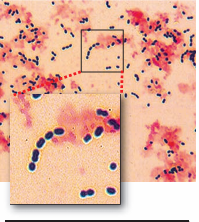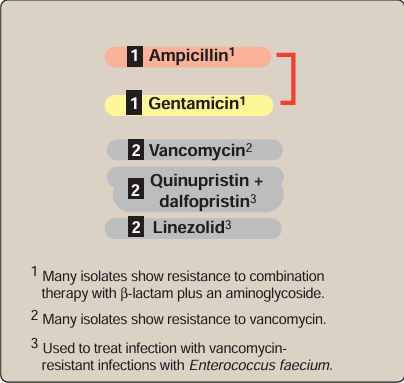

النبات

مواضيع عامة في علم النبات

الجذور - السيقان - الأوراق

النباتات الوعائية واللاوعائية

البذور (مغطاة البذور - عاريات البذور)

الطحالب

النباتات الطبية


الحيوان

مواضيع عامة في علم الحيوان

علم التشريح

التنوع الإحيائي

البايلوجيا الخلوية


الأحياء المجهرية

البكتيريا

الفطريات

الطفيليات

الفايروسات


علم الأمراض

الاورام

الامراض الوراثية

الامراض المناعية

الامراض المدارية

اضطرابات الدورة الدموية

مواضيع عامة في علم الامراض

الحشرات


التقانة الإحيائية

مواضيع عامة في التقانة الإحيائية


التقنية الحيوية المكروبية

التقنية الحيوية والميكروبات

الفعاليات الحيوية

وراثة الاحياء المجهرية

تصنيف الاحياء المجهرية

الاحياء المجهرية في الطبيعة

أيض الاجهاد

التقنية الحيوية والبيئة

التقنية الحيوية والطب

التقنية الحيوية والزراعة

التقنية الحيوية والصناعة

التقنية الحيوية والطاقة

البحار والطحالب الصغيرة

عزل البروتين

هندسة الجينات


التقنية الحياتية النانوية

مفاهيم التقنية الحيوية النانوية

التراكيب النانوية والمجاهر المستخدمة في رؤيتها

تصنيع وتخليق المواد النانوية

تطبيقات التقنية النانوية والحيوية النانوية

الرقائق والمتحسسات الحيوية

المصفوفات المجهرية وحاسوب الدنا

اللقاحات

البيئة والتلوث


علم الأجنة

اعضاء التكاثر وتشكل الاعراس

الاخصاب

التشطر

العصيبة وتشكل الجسيدات

تشكل اللواحق الجنينية

تكون المعيدة وظهور الطبقات الجنينية

مقدمة لعلم الاجنة


الأحياء الجزيئي

مواضيع عامة في الاحياء الجزيئي


علم وظائف الأعضاء


الغدد

مواضيع عامة في الغدد

الغدد الصم و هرموناتها

الجسم تحت السريري

الغدة النخامية

الغدة الكظرية

الغدة التناسلية

الغدة الدرقية والجار الدرقية

الغدة البنكرياسية

الغدة الصنوبرية

مواضيع عامة في علم وظائف الاعضاء

الخلية الحيوانية

الجهاز العصبي

أعضاء الحس

الجهاز العضلي

السوائل الجسمية

الجهاز الدوري والليمف

الجهاز التنفسي

الجهاز الهضمي

الجهاز البولي


المضادات الميكروبية

مواضيع عامة في المضادات الميكروبية

مضادات البكتيريا

مضادات الفطريات

مضادات الطفيليات

مضادات الفايروسات

علم الخلية

الوراثة

الأحياء العامة

المناعة

التحليلات المرضية

الكيمياء الحيوية

مواضيع متنوعة أخرى

الانزيمات
Enterococci
المؤلف:
Cornelissen, C. N., Harvey, R. A., & Fisher, B. D
المصدر:
Lippincott Illustrated Reviews Microbiology
الجزء والصفحة:
3rd edition , p87-88
2025-01-21
932
Enterococci contain a C-substance that reacts with group D anti sera. Therefore, in the past, they were considered group D streptococci. Today, DNA analysis and other properties have placed them in their own genus, Enterococcus. The clinically most important species are E. faecalis and E. faecium. Enterococci can be α-, β-, or nonhemolytic. As a rule, enterococci are not very virulent, but they have become prominent as a cause of nosocomial infections as a result of their multiple antibiotic resistance. Figure1 shows the microscopic appearance of E. faecalis.

Fig1. Enterococcus fecalis showing chain formation characteristic of Streptococcus.
A. Epidemiology
Enterococci are part of the normal fecal flora. However, they can also colonize oral mucous membranes and skin, especially in hospital settings. These organisms are highly resistant to environmental and chemical agents and can persist on fomites. B. Diseases Enterococci seldom cause disease in normal, healthy individuals. However, under conditions in which host resistance is lowered or the integrity of the gastrointestinal or genitourinary tract has been disrupted (for example, by instrumentation), enterococci can spread to normally sterile sites, causing urinary tract infections, bacteremia/sepsis, endocarditis, biliary tract infection, or intra-abdominal abscesses.
C. Laboratory identification
Enterococci are distinguished from the non–group D streptococci by their ability to survive in the presence of bile, and to hydrolyze the polysaccharide esculin, producing black colonies on esculin-containing plates. Unlike nonenterococcal group D streptococci, enterococci grow in 6.5 percent NaCl, and yield a positive pyrazin amidase (PYR) test. E. faecalis can be distinguished from E. faecium by their fermentation patterns, which are commonly evaluated in clinical lab oratories
D. Treatment
Enterococci are naturally resistant to β-lactam antibiotics and aminoglycosides, but are sensitive to the synergistic action of a combination of these classes. In the past, the initial regimens of choice were penicillin +/– streptomycin or ampicillin +/– gentamicin (Figure 2). However, acquired resistance determinants in many current strains negate this synergy. In addition, isolates frequently have natural or acquired resistances to many other antibiotic classes, including glycopeptides such as vancomycin. Newer antibiotics, such as the combination of quinupristin and dalfopristin, are used to treat vancomycin-resistant infections. However, some enterococcal strains are resistant to all commercially available anti biotics. [Note: E. faecium is more likely to be vancomycin or multiply resistant than E. faecalis.]

Fig2. Antimicrobial agents useful in treating infections caused by enterococci.
E. Prevention
The rise of nosocomial infections by multiple drug –resistant enterococci is largely the result of selection due to high antibiotic usage in hospitals. Judicious use of antibiotics is an important factor in con trolling the emergence of these infections
 الاكثر قراءة في البكتيريا
الاكثر قراءة في البكتيريا
 اخر الاخبار
اخر الاخبار
اخبار العتبة العباسية المقدسة

الآخبار الصحية















 قسم الشؤون الفكرية يصدر كتاباً يوثق تاريخ السدانة في العتبة العباسية المقدسة
قسم الشؤون الفكرية يصدر كتاباً يوثق تاريخ السدانة في العتبة العباسية المقدسة "المهمة".. إصدار قصصي يوثّق القصص الفائزة في مسابقة فتوى الدفاع المقدسة للقصة القصيرة
"المهمة".. إصدار قصصي يوثّق القصص الفائزة في مسابقة فتوى الدفاع المقدسة للقصة القصيرة (نوافذ).. إصدار أدبي يوثق القصص الفائزة في مسابقة الإمام العسكري (عليه السلام)
(نوافذ).. إصدار أدبي يوثق القصص الفائزة في مسابقة الإمام العسكري (عليه السلام)


















